
A Force of Nature: Studio Formafantasma Transforms Volcanic Rocks into Design Objects
Words by Kiriakos Spirou
Location
A Force of Nature: Studio Formafantasma Transforms Volcanic Rocks into Design Objects
Words by Kiriakos Spirou
We never cease to be amazed by the work of Andrea Trimarchi and Simone Farresin, the design duo known as Studio Formafantasma. Based in Eindhoven, The Netherlands, the two Italians really know how to produce perfectly-finished objects of superior craftsmanship that also possess a sophisticated conceptual framework. In what could be their most intriguing collection to date, Formafantasma’s new body of work titled ‘De Natura Fossilium’ is an exploration of the relationship between Sicily’s volcanoes and the communities surrounding their trembling and often fiery slopes. Following its unveiling during Milan Design Week last month, the collection is currently on display at Gallery Libby Sellers in London (41-42 Berners street, London W1T 3NB) , and will be open until 12 June 2014. The exhibition is accompanied by a photography series by Formafantasma’s long-time collaborator Luisa Zanzani.
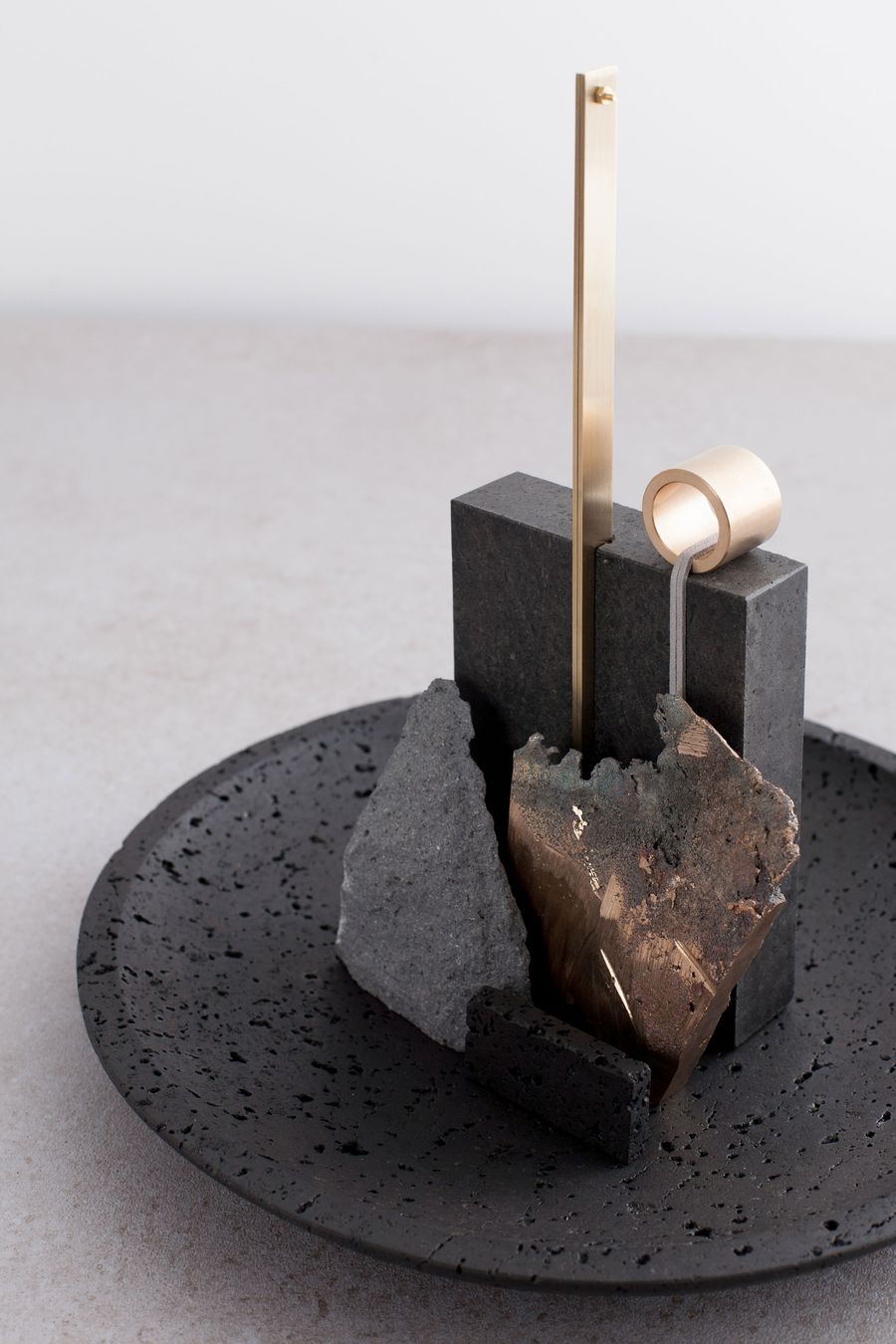
Lipari, 2014 (detail)
Occhio di pernice basalt, lava rocks, brass, textile.
H35 x W35 cm
‘De Natura Fossilium’ by studio Formafantasma.
Photo by Luisa Zanzani. Courtesy of Gallery Libby Sellers.
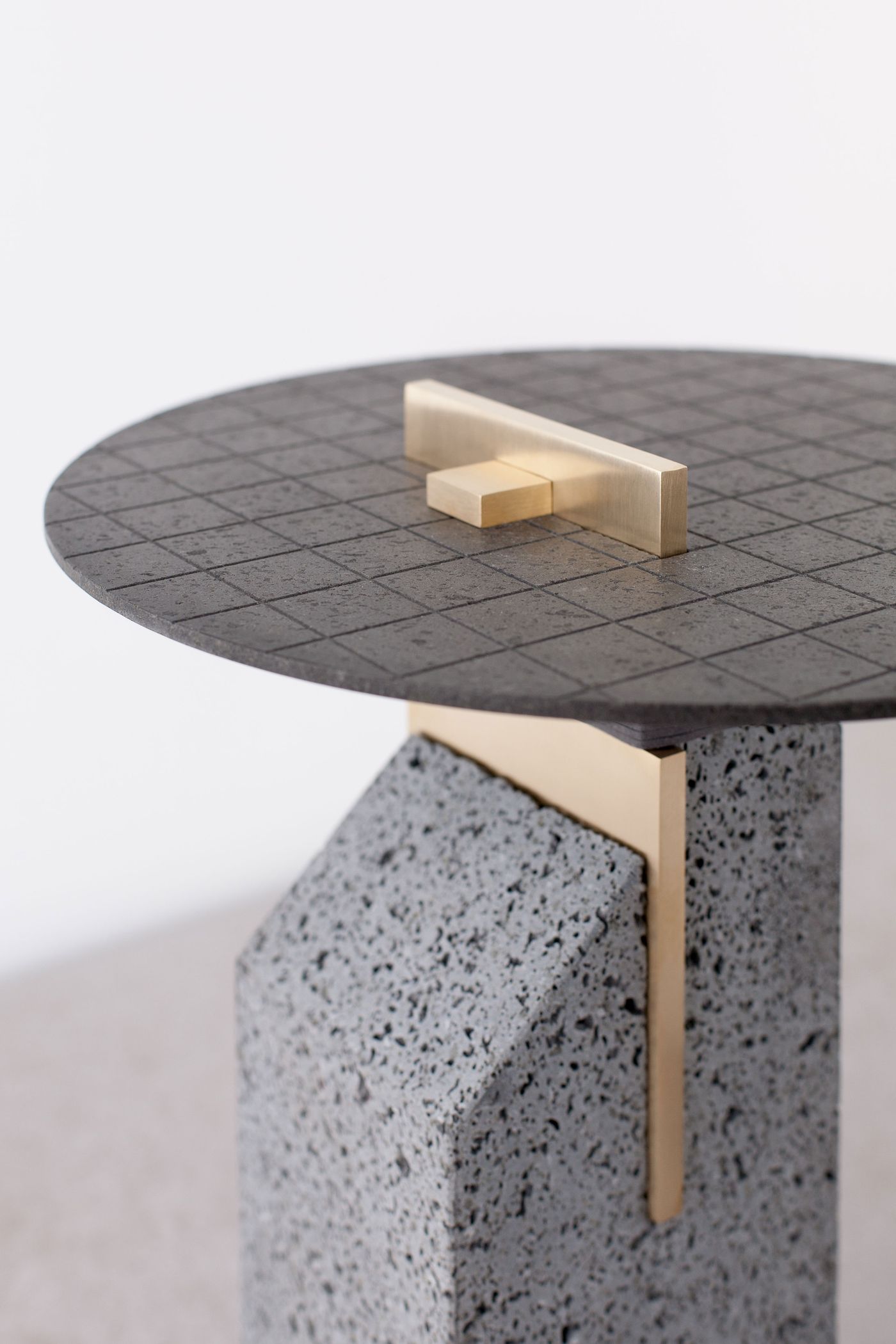
Small Pillar, 2014 (detail)
Basalt, Occhio di pernice basalt, brass, textile.
H50 x W35 x D35 cm
‘De Natura Fossilium’ by studio Formafantasma.
Photo by Luisa Zanzani. Courtesy of Gallery Libby Sellers.
Consisting of various objects for the home such as bowls, decorative boxes, a stool and small tables, ‘De Natura Fossilium’ features almost otherworldly materials like basalt, lava rocks and obsidian glass, either carved into geometric forms or used unaltered, bound together with brass or textile strings. The collection borrows its title from a 16th-century treatise on minerals and rocks by Georgius Agricola which constitutes one of the earliest scientific attempts in the field of mineralogy. Just as Agricola was a pioneer in his science, namelythrough, naming and classifying the earth’s rocks and minerals for the very first time, Studio Formafantasma has also, in turn, attempted to approach the use of volcanic stones and minerals anew, both through a study of traditional arts and crafts relating to the rocks found on Etna and Stromboli, as well as through a rigorous research process on contemporary manufacturing techniques that push these volcanic materials to new, exciting extremes.
Apart from the volcanic rocks, natural glass and metals that have been used, Trimarchi and Farresin have also deployed the use of lava-stone thread which was developed as a more sustainable alternative to carbon fibre. The designers have utilised this thread in the weaving of two tapestries depicting the ancient deities of the Sicilian volcanoes, Hephaestus and Athena (Vulcan and Minerva for the Romans). The heat and force of the volcano was also symbolically harvested during the project in the production of mouth-blown glass using lava stones, a process that reverses the natural behaviour of the volcano by re-melting the solidified lava stones into pitch-black glass.
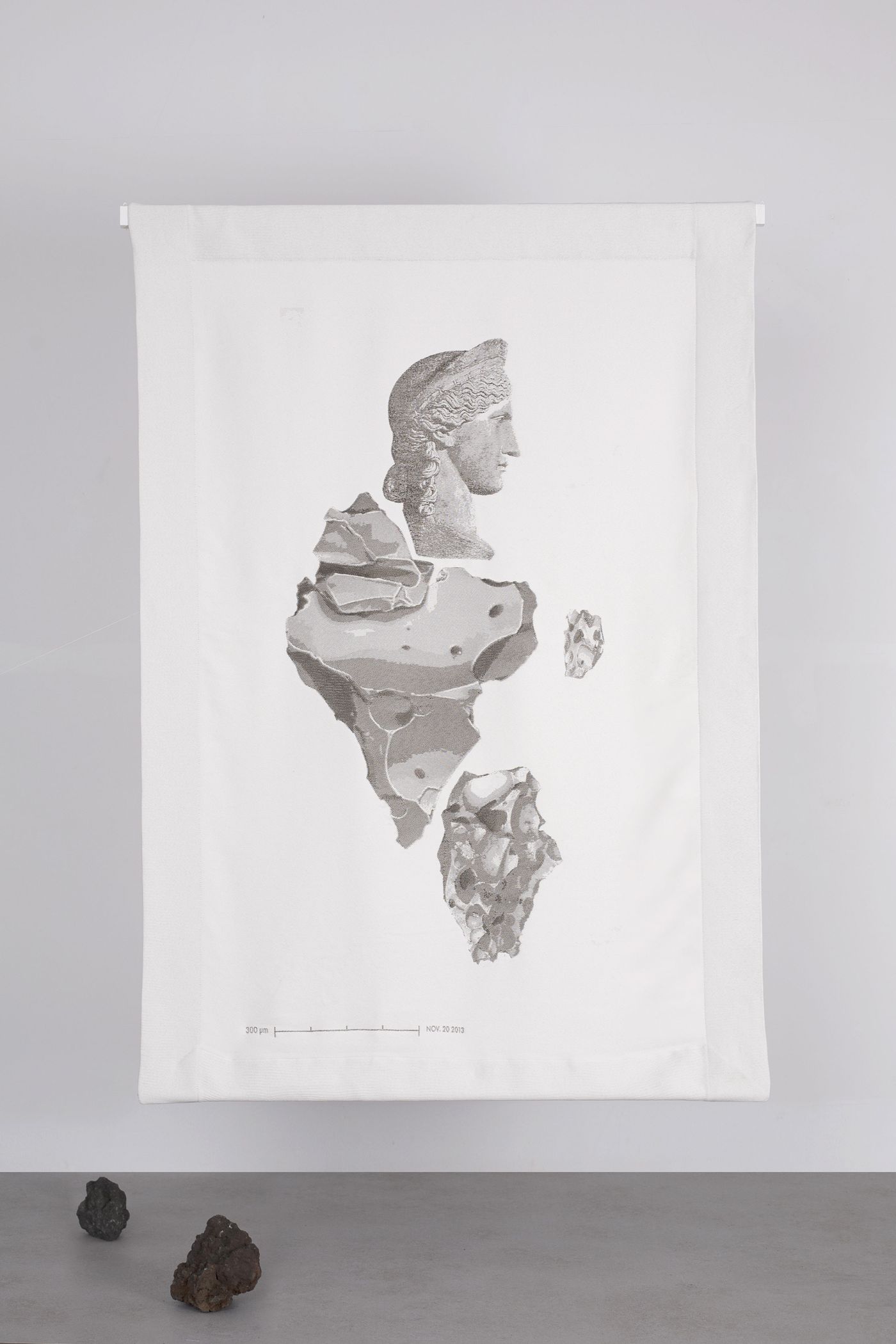
Athena, 2014
Basalt fibre, cotton.
H190 x W120 cm
‘De Natura Fossilium’ by studio Formafantasma.
Photo by Luisa Zanzani. Courtesy of Gallery Libby Sellers.
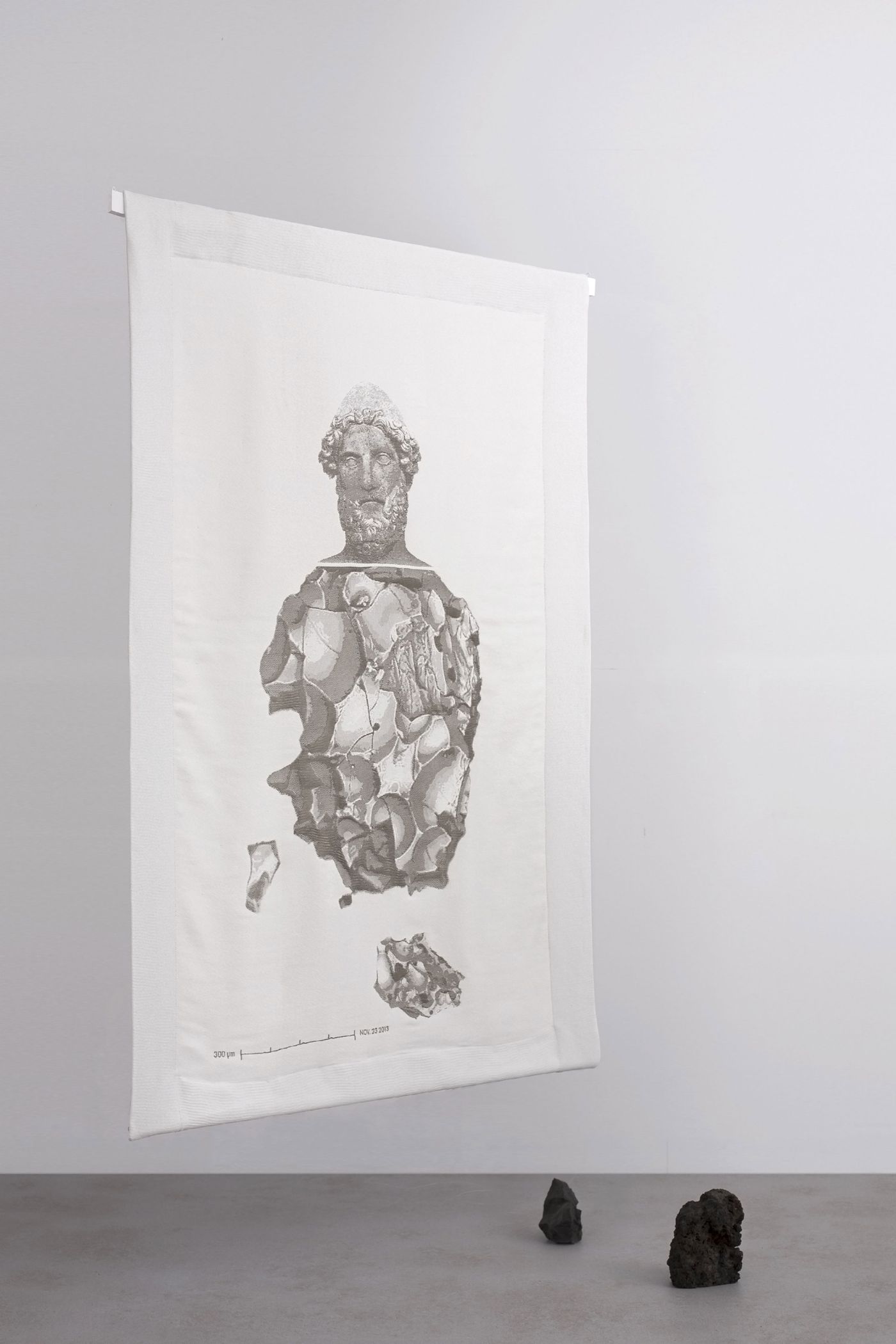
Efesto, 2014
Basalt fibre, cotton.
H190 x W120 cm
‘De Natura Fossilium’ by studio Formafantasma.
Photo by Luisa Zanzani. Courtesy of Gallery Libby Sellers.
Despite its experimental character, the collection is extremely refined and balanced. Dedicated to Italian designer Ettore Sottsass – the master’s influence in the modular designs, linear forms and quasi-haphazard compositions of the ‘De Natura Fossilium’ collection are in fact easily detectable. The sleek glass and basalt volumes are juxtaposed with natural lava stones in a gesture that refers to the traditional lava sculptures of Sicilian artisans traditionally carved only on one side (giving the sculpture a double face, one carved by man, the other carved by nature). The colection also includes a conceptual clock, a rather meditative piece that can also be read as a Zen art installation: three basalt bowls, indicating the hours, minutes and seconds, contain volcanic sand from three different ages, gently being pushed around by a brass clock hand. With symbolic elements such as rotating earth and moving time, this could indeed be one of the most poetic pieces of design we have seen in quite a while.
‘De Natura Fosssilium’ collection credits:
Concept, Design: Andrea Trimarchi, Simone Farresin
Development: Francesco Zorzi, Nicola Lorini, Emile Kirsch, Bettina Bohm, Luisa Zanzani, Francesco Pace
Production: Ingv/Catania (Rosanna Corsaro, Lucia Miraglia) Carl Aubock/Vienna, Berengo Studio, Leerdam Glass Museum, Textiel Museum Tilburg, Sergio Grasso, Teun Vinken
Photo Credit: Luisa Zanzani
Special thanks to: P-S, MichelaPelizzari, Federica Sala
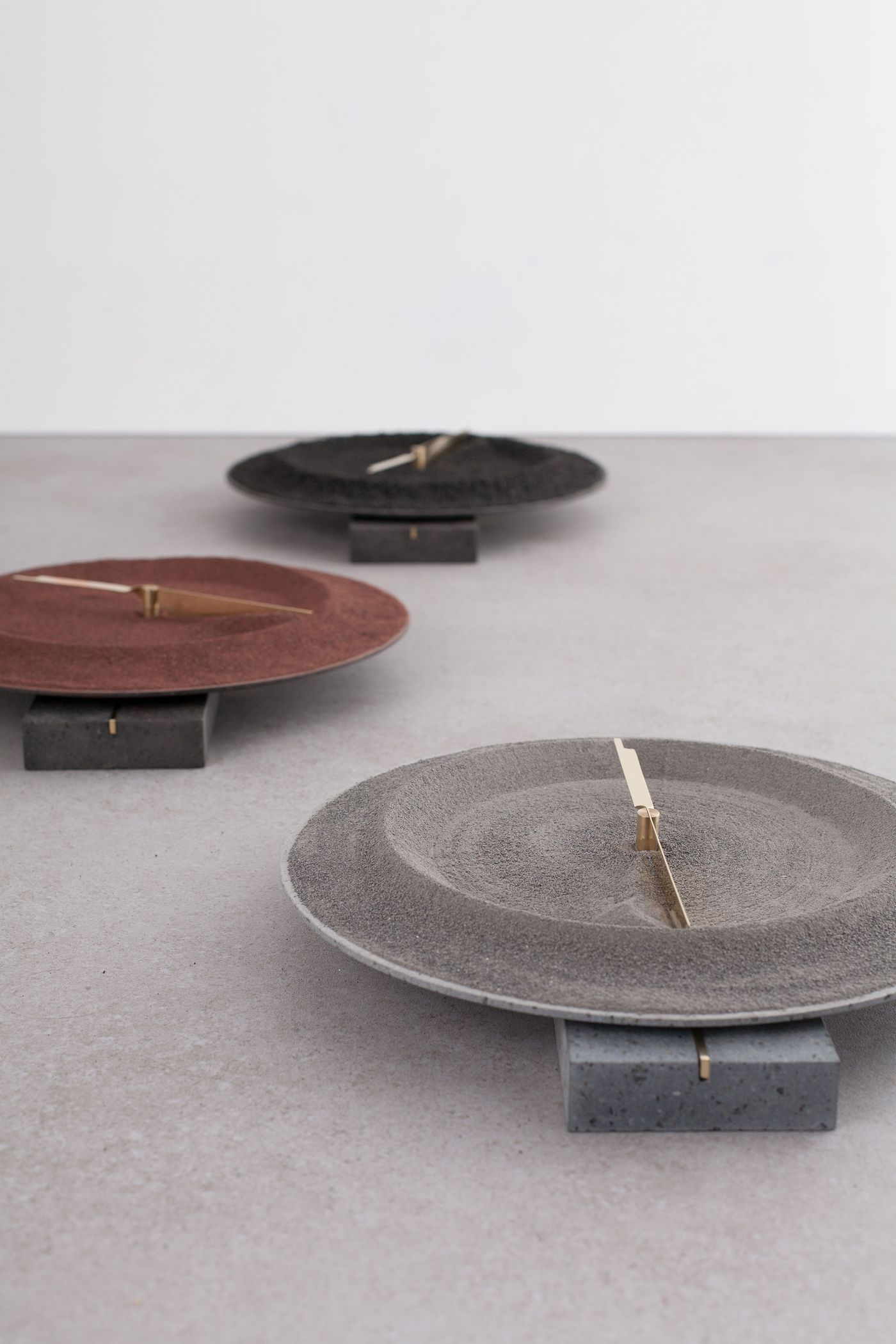
Monti Silvestri, 2014
Basalt, brass, electrical components, lava sand.
Each piece: H35 x D35 cm
‘De Natura Fossilium’ by studio Formafantasma.
Photo by Luisa Zanzani. Courtesy of Gallery Libby Sellers.
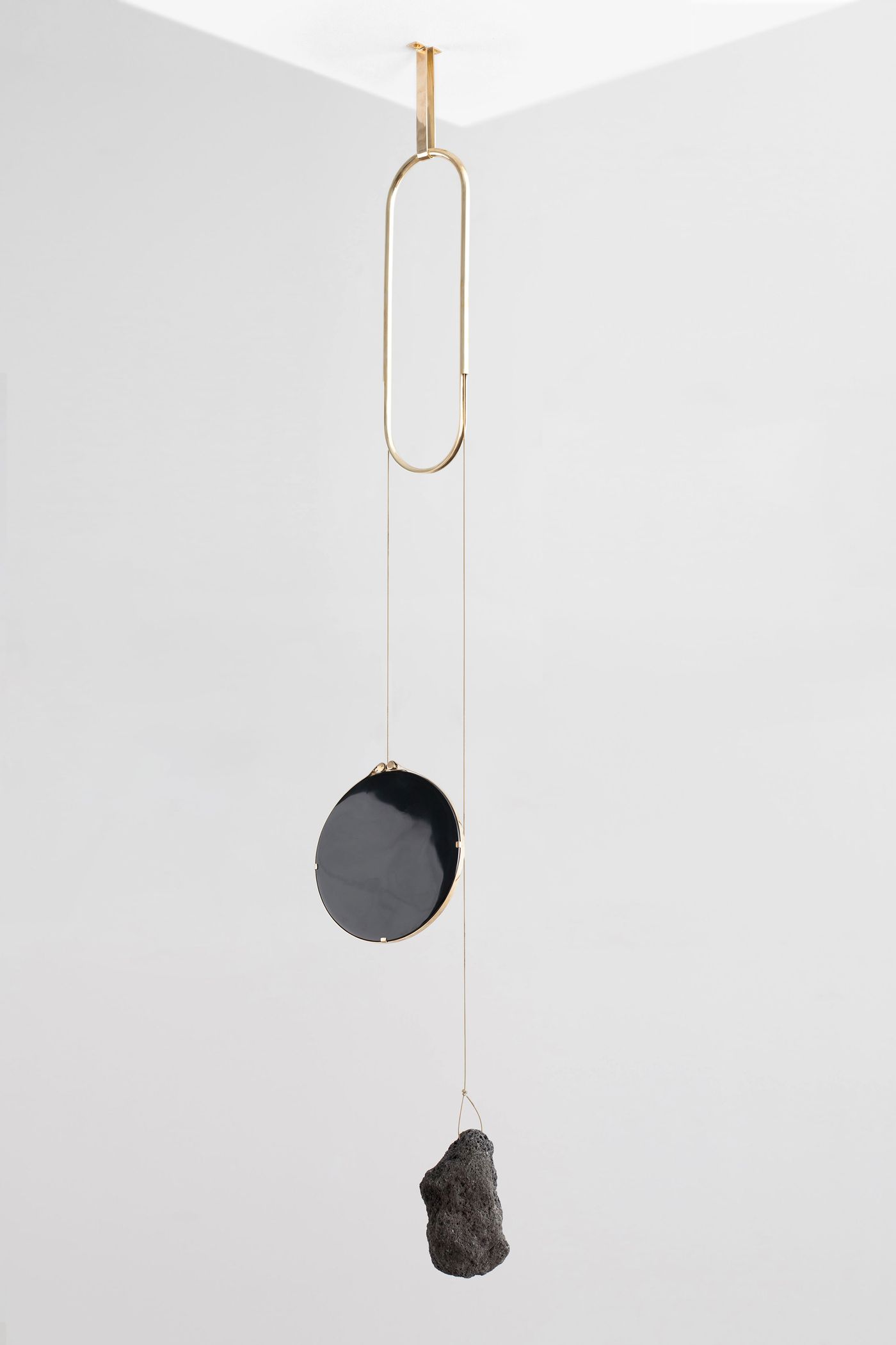
Iddu, 2014
Obsidian mirror, lava rock, brass.
H150 x W40 cm
‘De Natura Fossilium’ by studio Formafantasma.
Photo by Luisa Zanzani. Courtesy of Gallery Libby Sellers.
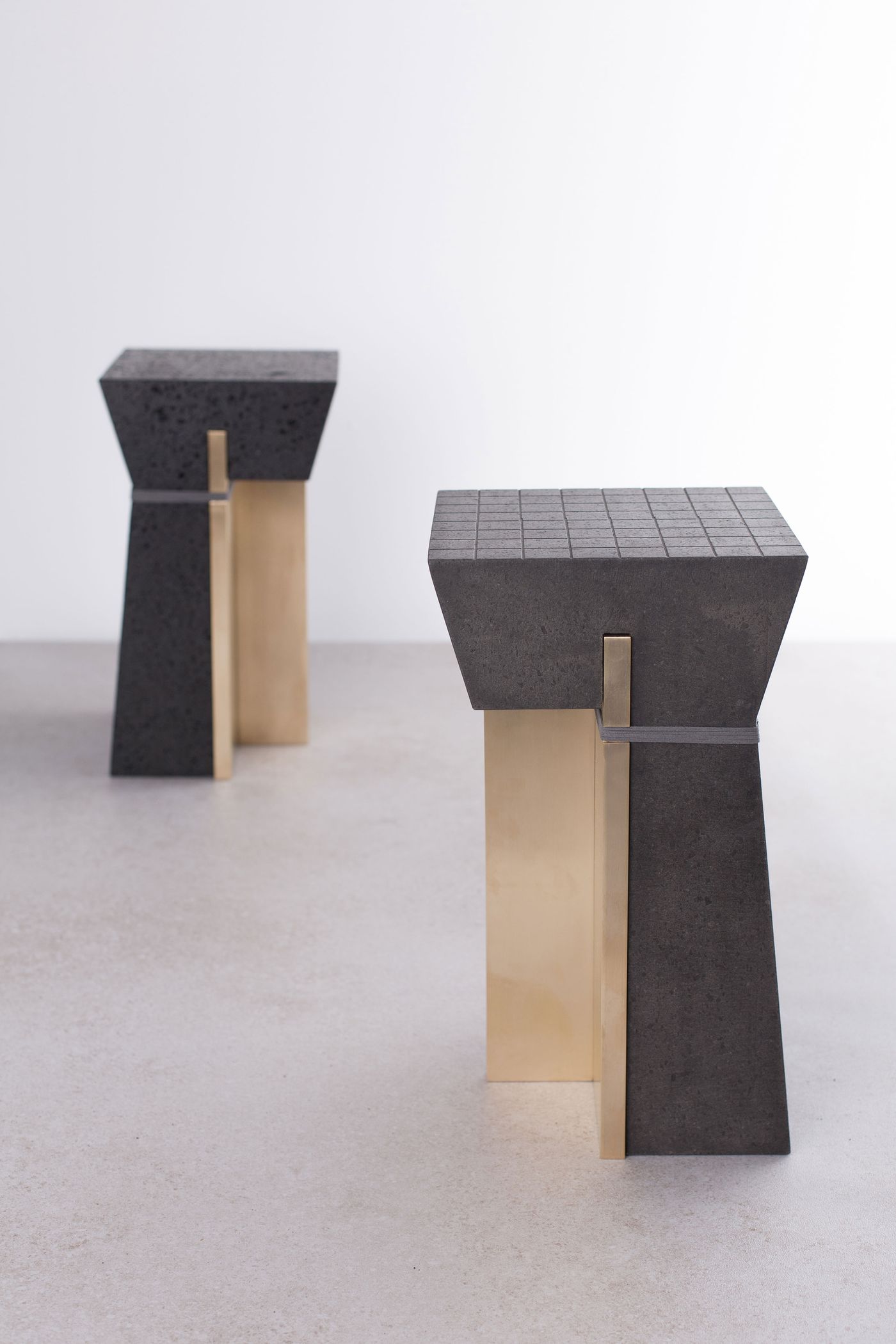
left: 1892 Stool, 2014
Occhio di pernice basalt, brass, textile.
H60 x W30 x D30 cm
right: 1614 Stool, 2014
Basalt, brass, textile.
H60 x W30 x D30 cm
‘De Natura Fossilium’ by studio Formafantasma.
Photo by Luisa Zanzani. Courtesy of Gallery Libby Sellers.
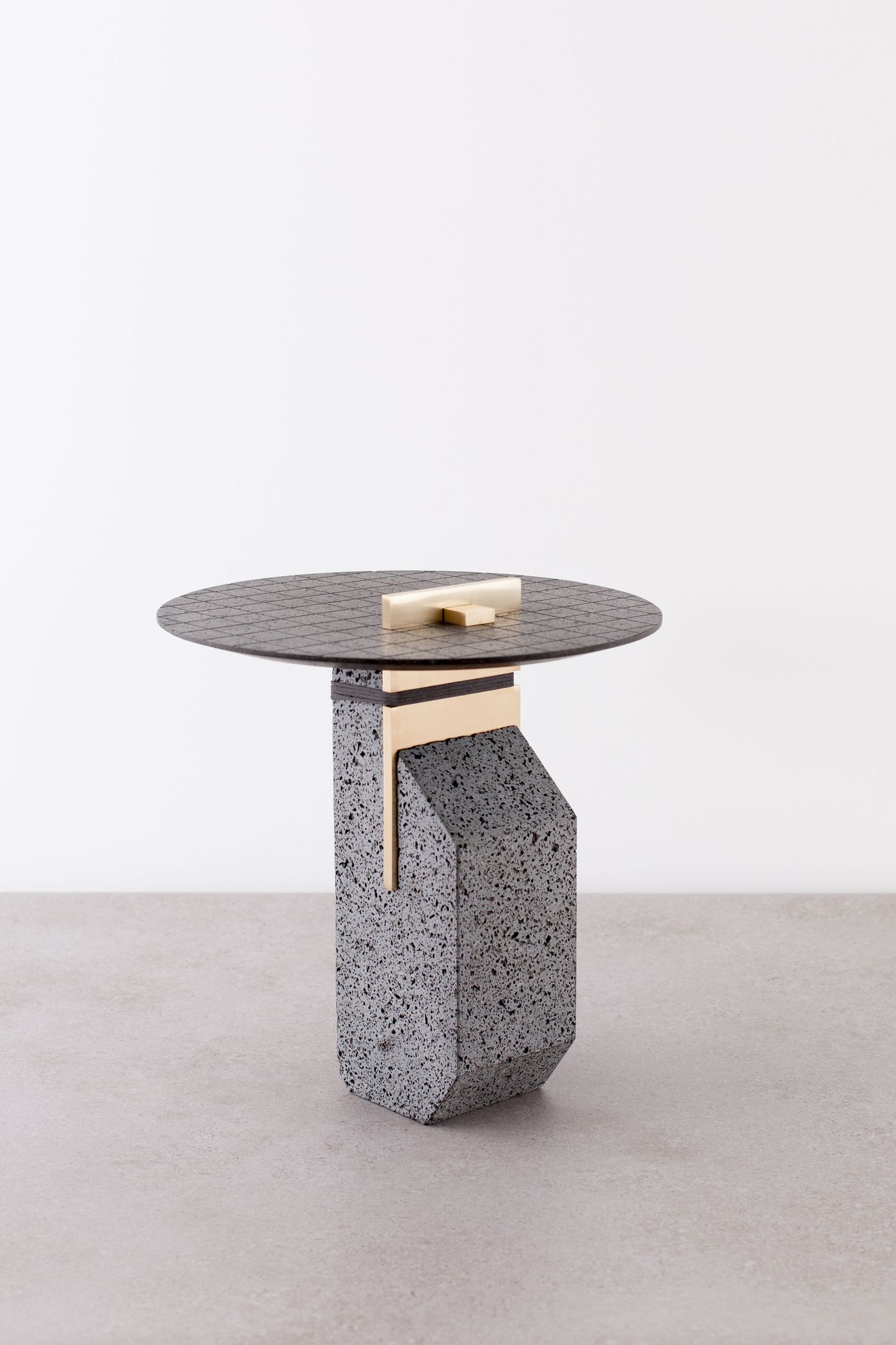
Small Pillar, 2014
Basalt, Occhio di pernice basalt, brass, textile.
H50 x W35 x D35 cm
‘De Natura Fossilium’ by studio Formafantasma.
Photo by Luisa Zanzani. Courtesy of Gallery Libby Sellers.
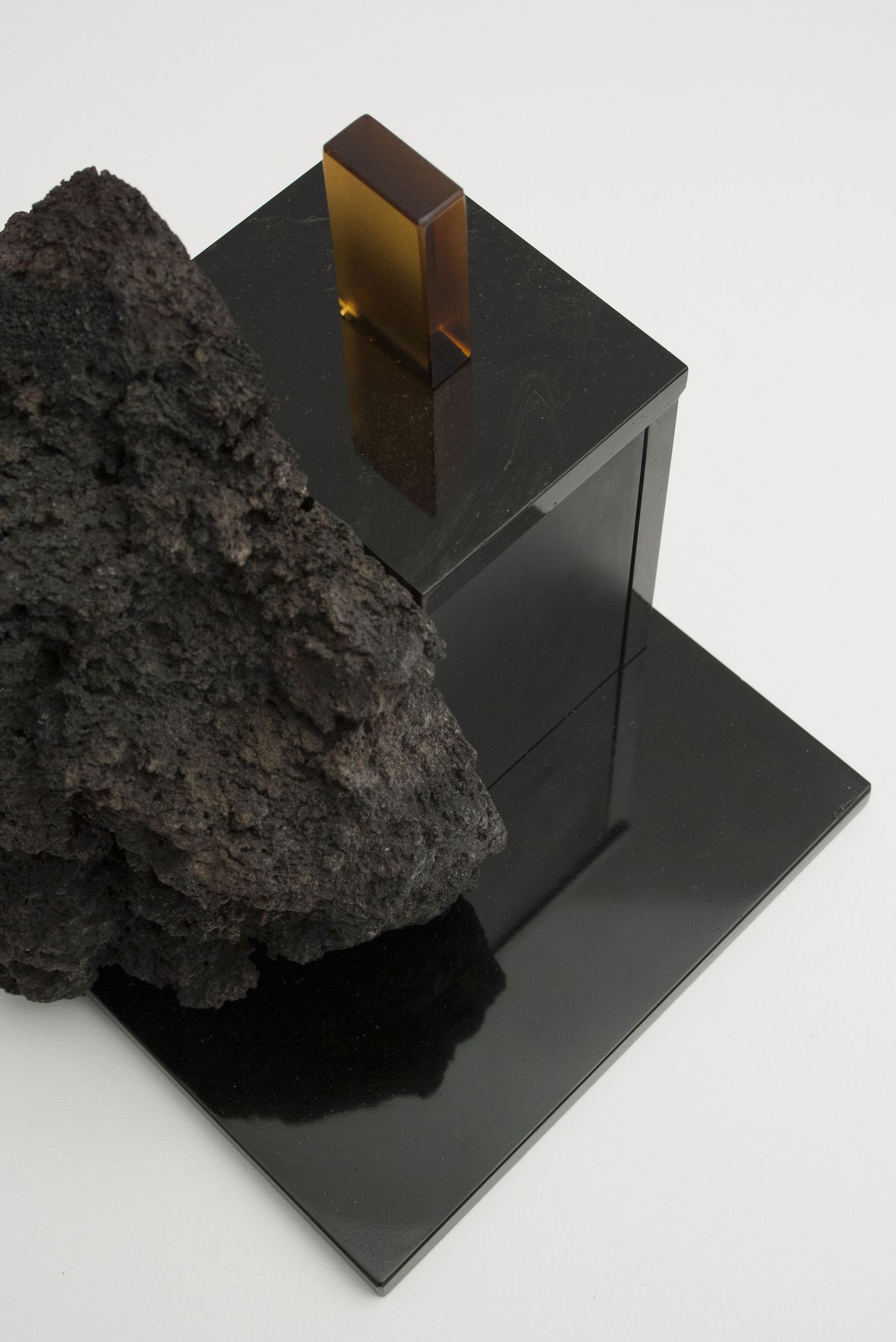
Linguaglossa, 2014
Mouth blown lava, lava rock, Murano glass.
H35 x W25 x D25 cm
‘De Natura Fossilium’ by studio Formafantasma.
Photo by Luisa Zanzani. Courtesy of Gallery Libby Sellers.
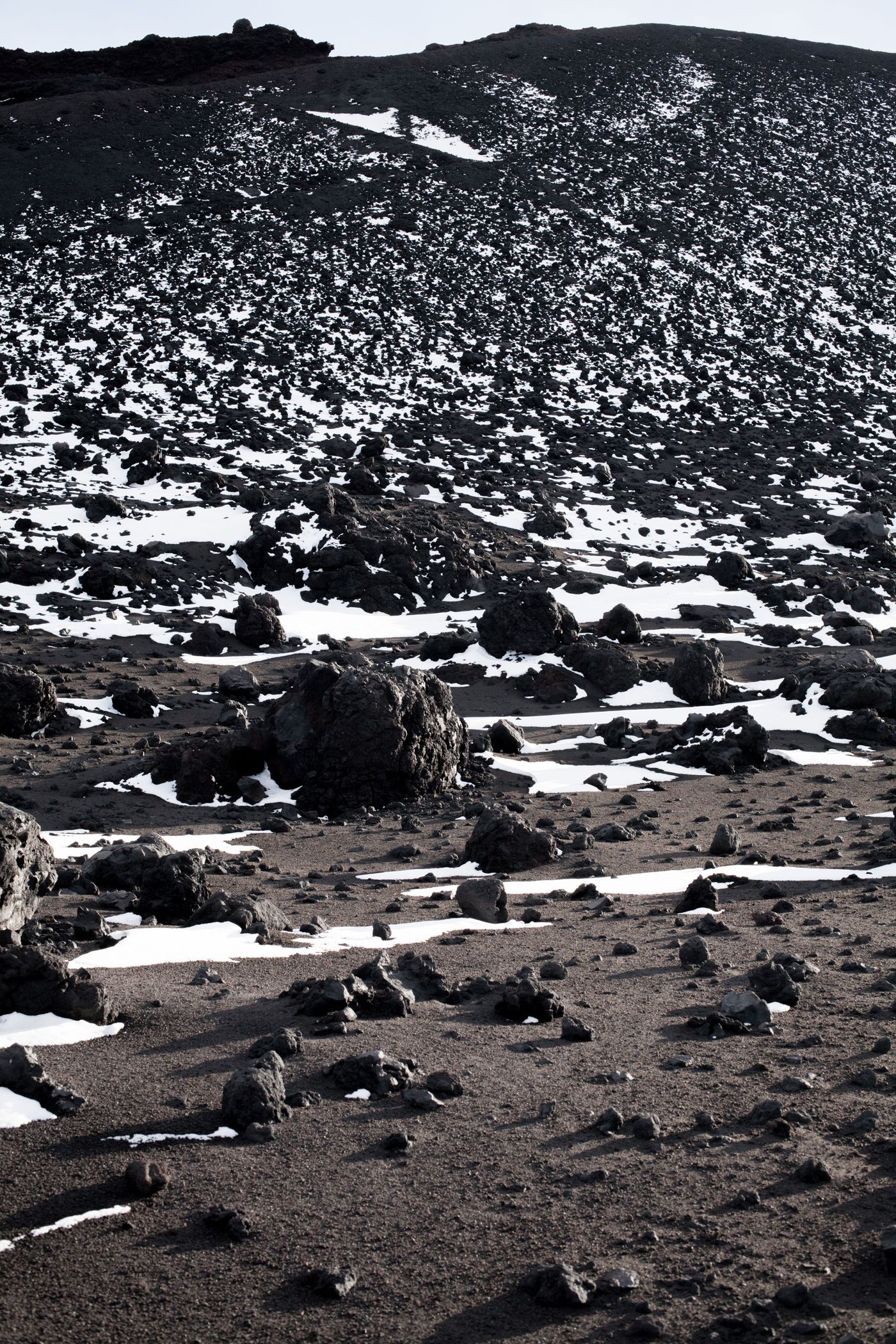
Etnea Photo Collection, 2014 by Luisa Zanzani.
Various dimensions
‘De Natura Fossilium’ by studio Formafantasma.
Photo by Luisa Zanzani. Courtesy of Gallery Libby Sellers.
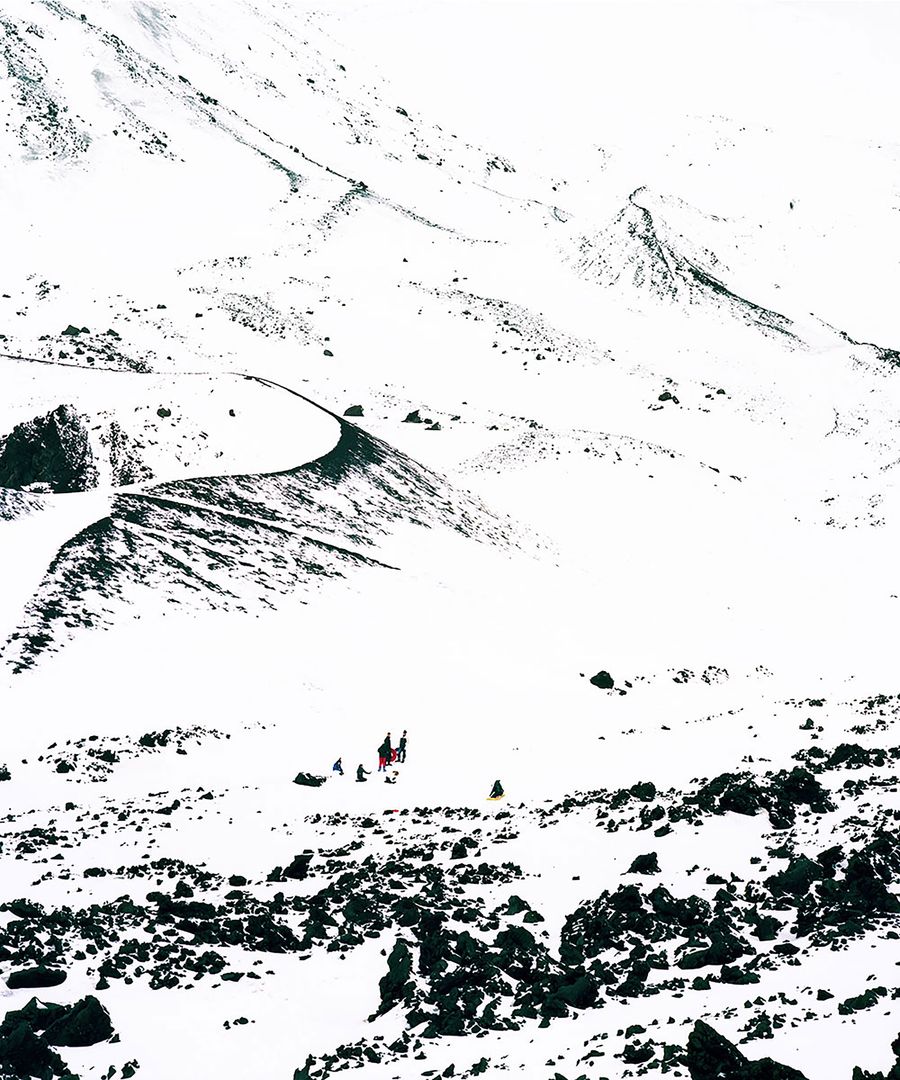
Etnea Photo Collection, 2014 by Luisa Zanzani.
Various dimensions
‘De Natura Fossilium’ by studio Formafantasma.
Photo by Luisa Zanzani. Courtesy of Gallery Libby Sellers.

Alicudi, 2014
Mouth blown lava, lava rock, Murano glass.
H35 x W35 x D25 cm
‘De Natura Fossilium’ by studio Formafantasma.
Photo by Luisa Zanzani. Courtesy of Gallery Libby Sellers.